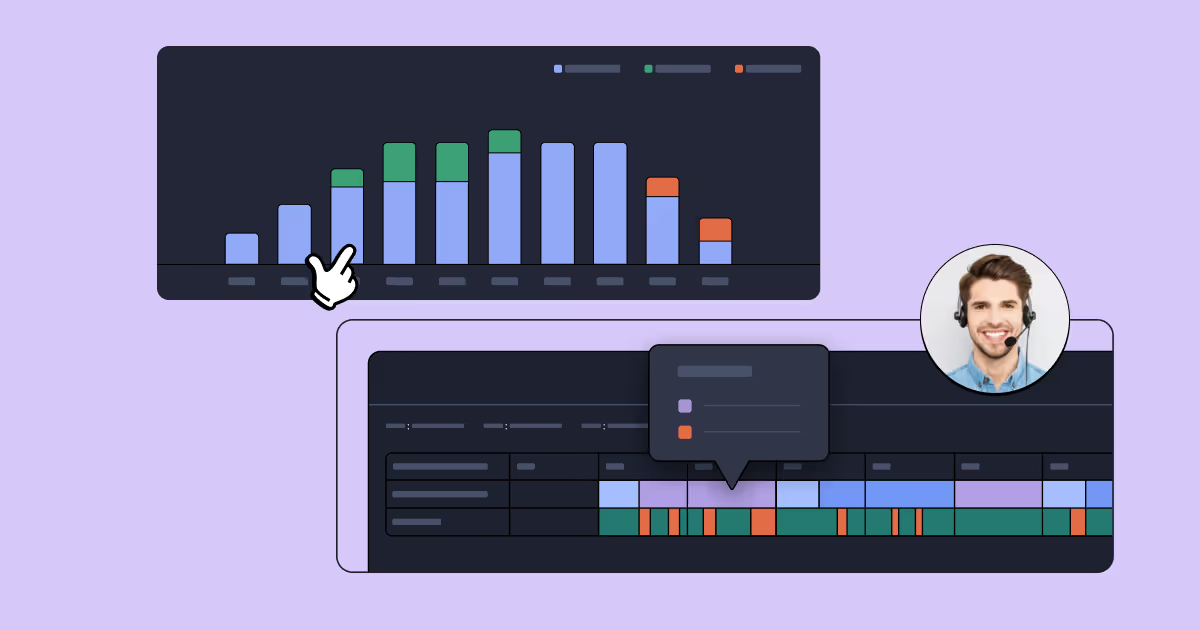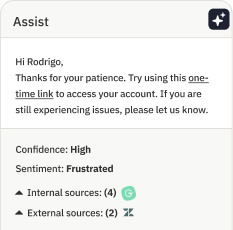Call Center Monitoring — Assembled

Call Center Monitoring
As more and more technology has entered our daily lives, customers have higher expectations for product support than they ever have in the past. This is why many businesses have dedicated departments with their own call centers to manage concerns and questions from customers as they come in. At the same time, it can be challenging to manage call centers. That is why companies need to leverage call center monitoring to help them get the most out of their call centers.
When it comes to call center monitoring, there are a few best practices to follow for small, medium, and enterprise-level businesses. First, it is important to take a look at the definition of call monitoring. Call monitoring is the practice of monitoring customer service phone calls and agents to make sure each customer has his or her needs met. While it is possible to check every call that comes into the call center, it is more important for businesses to look for overall trends. For example, call monitoring for small businesses means checking customer satisfaction levels over time, making sure they are satisfied with the results of their calls. Therefore, it is important for call center monitoring to define what quality means to the business and to its clients. What does call center quality look like?
When implementing call center monitoring, it is important to keep it simple. Remember that agents are on the front line handling calls constantly. They will not be able to think about every little detail during each call. Therefore, let agents know what the major goals of the call center are. Then, train them continuously to make sure they keep up with the changing priorities of the company along with the changing expectations of customers. Finally, make sure that everyone is involved in call center monitoring. This includes not only the representatives but the managers as well.
Call Monitoring Companies
When it comes to call monitoring companies, there are a few points that businesses should keep in mind. First, it is a good idea to put the right people in charge of call monitoring jobs. Ideally, these should be experienced agents who know what a good call and what a ball call looks like. That way, they can train employees to handle calls appropriately, avoiding issues that might otherwise blossom into major problems. Second, it is important to note that there are numerous types of call monitoring devices. For example, a call monitoring scorecard, even on a sheet of paper, is a call monitoring device. There are also recording devices that can help with call monitoring along with advanced software programs that can track when calls come in, how long customers wait, and how long it takes to resolve a phone call.
In this manner, businesses can invest in numerous types of call monitoring. Quality assurance is the most basic type of call monitoring, which allows managers to silently listen to conversations, making sure they proceed well. Another type of call monitoring is call recording. This is where companies can record phone calls and listen to them later if an issue arises. Finally, call barging is another type of call monitoring. While this varies slightly from company to company, call barging allows someone else to take over the phone call if he or she senses that this issue needs the attention of someone with a bit more experience. This is a quick overview of how call monitoring might work in a call center.
Call Center Quality Monitoring
One of the most important tools that all companies need to use is called call center quality monitoring. With call center quality monitoring, the goal is to make sure that every phone call meets the call center quality assurance guidelines issued by the company. On its most basic level, this involves a call center quality assurance form. A few call center quality assurance form examples include key metrics such as the average number of calls handled per hour, how many calls are resolved on the first pass, how long customers spend waiting and how many calls need to be escalated. In a call center quality assurance training PDF, all of these metrics need to be discussed so employees have an objective target at which they can aim as they handle phone calls.
When it comes to call center quality monitoring, it is better to use advanced software programs instead of hard sheets of paper. Software programs can automate these metrics, preventing errors from arising, and saving employees the trouble of writing this information down. When implementing call center quality monitoring, there are a few best practices to follow. First, evaluate after an appropriate sample size. Give the employee time to develop a track record before taking a look at his or her numbers. Second, provide feedback so employees know when they are doing well and when they need to improve. Finally, fully explain call center quality monitoring to every new agent so they understand the expectations.
Call Center Quality Monitoring Scorecard
One of the most important tools in every call center is called the call center quality monitoring scorecard. Having a call center quality monitoring scorecard is one of the most important call quality monitoring best practices. When it comes to quality, there are a few metrics that should be included on a call center agent performance scorecard. First, it is important to track how many phone calls an agent handles per shift. This makes sure that agents are continuously working during their shift. It is also a good idea to track the average time elapsed between the end of one phone call and the start of the next. Second, track how many calls are resolved by the agent on the first pass. Third, track the average satisfaction score of the customer at the end of the call. Finally, track how many of the agent’s calls require escalation, as this is also an important metric. Agents should be able to resolve most calls on the first attempt.
It is a good idea to provide continuous feedback; however, only evaluate agents about once per quarter. Give them time to generate a large sample size before evaluating them. Remember that low satisfaction scores are usually a product of the outcome of the call and are not necessarily the fault of the agent. Evaluate them with appropriate context. When it comes to a call center quality monitoring scorecard made in Excel, there are a few call center quality monitoring scorecard templates in Excel to download that companies can use.
Call Center Software
When it comes to running a call center, companies want to handle calls as quickly as possible while still solving the customer issue to their satisfaction. There are tools that can make it easier for them to do exactly this. That is where call center software can be helpful. This differs from call center monitoring software, which is used to track the performance of agents. For companies wondering how to improve quality in the call center, call center software can help them do that.
First, call center software can automate the process of receiving and responding to customer calls. In this manner, agents no longer have to click on a customer in the queue to start the call. Instead, they can indicate when they are ready for a new call and the call will start. This reduces the time between the end of one call and the start of the next one, making call centers more efficient.
Furthermore, call center software can be used to collect information on individual agents. This can automate the process of filling out a call center agent performance scorecard by quickly moving information from the database into the call center employee evaluation template. In this manner, call center software is an important tool that businesses should use.
Call Management Software
Another important type of call center software is call management software. While call center monitoring software from call monitoring companies is used to monitor how agents handle calls, call management software can direct calls where they need to go. This is an important part of a holistic management system for call centers.
In order to get the most out of call management software, it is important to segment agents by type and specialty. For example, some agents might specialize in handling a certain type of product or service while other agents might specialize in handling niche complaints that have been escalated. Then, companies can use call management software to direct calls to specialists who can handle these individual concerns more quickly. Using call management software, companies can increase the proportion of calls that are resolved on the first attempt while reducing the average call time. This will reduce the average customer wait time as well.
Virtual Call Center Software
Finally, with so many employees looking to work remotely, this has given rise to another type of call center software called virtual call center software. It is still possible to use call center monitoring software in the virtual setting; however, there are a few benefits of using virtual call center software. First, when employees are at home, this reduces overhead costs because companies do not have to provide as much equipment. Furthermore, they do not need to rent out a huge space to run a call center. Finally, employees are usually happier at home, which improves their mood on the phone.
When it comes to quality monitoring call center best practices, companies need to ensure security in a virtual call center, ensuring data doesn’t get stolen or compromised. They also need to continue to track employee performance on calls, making sure time is limited between calls and that employees remain active. Overall, a virtual call center can be a great addition to standard call centers.




